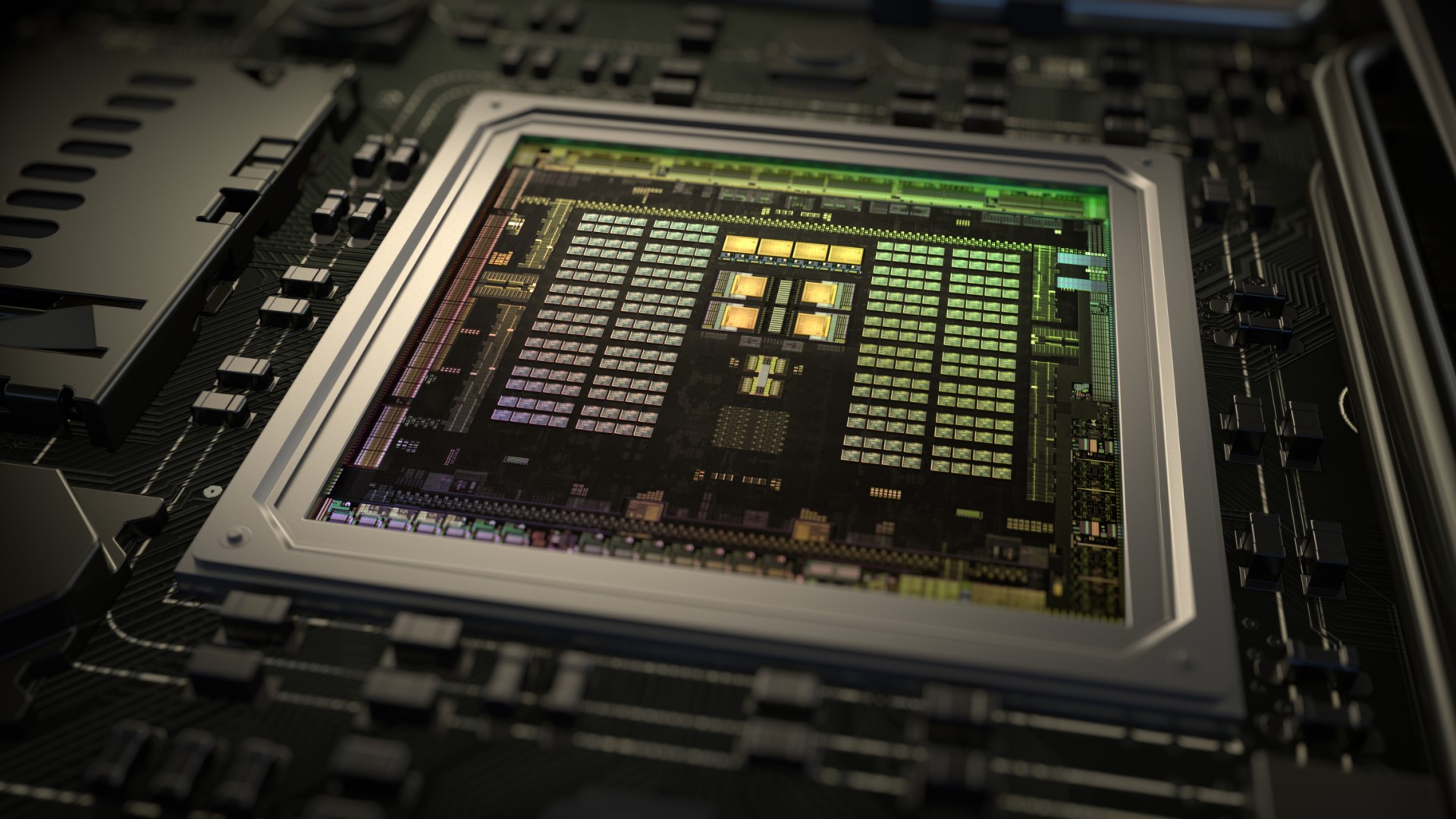Nvidia's 20-core N1X leaks with 3000+ single-core Geekbench score — Arm chip could rival Intel and AMD's laptop offerings

Nvidia's rumored N1X SoC has surfaced on Geekbench, rivaling the best mobile offerings from Intel, AMD, and Qualcomm, via Olrak at X. The alleged 20-core chip has hit over 3,000 single-core points on Geekbench, with multi-core performance nearing AMD's leading Strix Halo line. That being said, it's prudent that we approach this leak with caution, given that Nvidia has yet to confirm this chip officially.
The N1 family has long been a subject of rumors, marking Nvidia's foray into the consumer Windows-on-Arm landscape. Nvidia has reportedly partnered with MediaTek, which is expected to handle the CPU development of this SoC using off-the-shelf Arm Cortex cores. The first practical application of this partnership is the DGX Spark (formerly Project DIGITS), based on the GB10 superchip with 20 Arm cores (10x Cortex-X925 + 10x Cortex-A725) alongside a GPU that sports 6,144 CUDA cores based on the Blackwell architecture.
Per the Geekbench listing, the N1X was sported atop an HP development board (HP 83A3) under Linux (Ubuntu 24.04.1). With a 20-thread configuration in the listing, and the fact that Arm designs generally lack SMT (Simultaneous Multithreading) like Intel's Lion Cove, we're probably looking at 20 physical cores, similar to the GB10 mentioned above. At the same time, the development board is likely equipped with 128GB of system memory, with 8GB reserved for the GPU.
Before jumping into performance, it's generally not advisable to compare CPUs across different Operating Systems and Geekbench releases. So, I've listed a few relevant CPU samples, noting their OS and Geekbench version. The alleged N1X scores 3,096 points and 18,837 points in single-core and multi-core territories, respectively, with the frequency averaging out at 4 GHz. Even with varying environments, its performance is well within the range of top chips like Intel's Arrow Lake-HX and AMD's Ryzen AI MAX (Strix Halo).
CPU | Single Core | Multi Core | Operating System | Geekbench Version |
|---|---|---|---|---|
Nvidia N1X | 3,096 | 18,837 | Linux (Ubuntu) | 6.2.2 Preview |
AMD Ryzen AI MAX+ 395 | 3,125 | 21,035 | Linux (CachyOS) | 6.4.0 |
Intel Core Ultra 9 285HX | 3,078 | 22,104 | Windows 11 | 6.4.0 |
Apple M4 Max | 4,054 | 25,913 | macOS 15.1 | 6.3.0 |
Qualcomm Snapdragon X Elite | 2,693 | 13,950 | Windows 11 | 6.4.0 |
It even trumps Qualcomm's Snapdragon X Elite; that's expected since the X Elite uses Oryon V1 cores, which should be superseded by Oryon V3 with Snapdragon X2 SoCs next year. That being said, Apple still reigns supreme in Geekbench, with the M4 Max comfortably ahead by 30% (single-core).
Nvidia shied away from announcing or even mentioning these chips at Computex last month, so we may be in for a 2026 debut. It's possible the company may be dedicating more resources to DGX Spark, hoping to make these mini-PCs available for purchase before the upcoming holiday season. Regardless, by next year, more competition is expected with AMD's rumored Sound Wave APUs and Qualcomm's X2 SoCs, in addition to Panther Lake from Intel.
Follow Tom's Hardware on Google News to get our up-to-date news, analysis, and reviews in your feeds. Make sure to click the Follow button.
Get Tom's Hardware's best news and in-depth reviews, straight to your inbox.

Hassam Nasir is a die-hard hardware enthusiast with years of experience as a tech editor and writer, focusing on detailed CPU comparisons and general hardware news. When he’s not working, you’ll find him bending tubes for his ever-evolving custom water-loop gaming rig or benchmarking the latest CPUs and GPUs just for fun.
-
Elusive Ruse Taking these results as they are, I have to say they are quite impressive. This is Nvidia’s first iteration and it’s already being compared to M4 Max.Reply -
Tom Pf exciting to see. historically nvidia and mediatek do have ARM experience at least from SHIELD many years ago, power draw was usually secondary to performance. curious to see how this will play out in a modern workplace notebookReply -
JTWrenn Real question is power on these. They are meant to be hyper scaled at some point so if they murder amd on efficiency that will be a bit deal for the future of data centers.Reply -
Notton The Cortex-X925 in a Dimensity 9400+ scores 2770 in geekbench 6.3 single core.Reply
https://browser.geekbench.com/v6/cpu/11215407although nanoreview puts the 9400+ at 2927 in geekbench 6 single core.
https://nanoreview.net/en/soc-compare/qualcomm-snapdragon-8-gen-3-vs-mediatek-dimensity-9400-plusSo slightly faster SC than what is currently on the market, presumably because larger power/thermal envelope from a larger chasis.
But being a Mediatek SoC, I can't help but imagine how bad the drivers are going to be.
Mediatek and AMD partnered to make the RZ series of Wifi/BT chips, but those had atrocious drivers in Windows and Linux. The non-partnered Mediatek Wifi/BT cards also suck immensely in the driver department.
I sure hope Nvidia works on the GPU side. Mediatek has horrendously slow video decode time and somehow manages to pull of >30ms video decode on an Immortalis-G925, when Adreno 750 is down to <5ms. For comparison's sake, RDNA2 gets down to 0.5ms, and Nvidia Shield is <5ms. -
emike09 This is quite impressive. My OC'd 9950x3D gets 3621/22826 drawing up to 200W, with a 360mm AIO rad, putting it just above the Intel 285HX. Granted, this is just Geekbench though.Reply -
Mr Majestyk I wonder how the iGPU will perform. MLisD claims Nvidia insiders are going for Halo's jugular.Reply
Qualcomm next gen Elite X is getting up to 18 cpu cores and reportedly a very large iGPU uplift, but doubt it'll worry Halo or N1x for gaming. -
ThisIsMe ReplyMr Majestyk said:I wonder how the iGPU will perform. MLisD claims Nvidia insiders are going for Halo's jugular.
Qualcomm next gen Elite X is getting up to 18 cpu cores and reportedly a very large iGPU uplift, but doubt it'll worry Halo or N1x for gaming.
MLiD claims a lot of things. Might actually claim all the things, if it was possible to do so.
Anyway, a good performing MediaTek CPU that’s also stable enough to put into a multipurpose computer with your company’s logo on it is difficult to imagine. They have their uses. I’d have to be shown to be convinced though. -
kealii123 Its still embarrassing how much ahead Apple continues to be. I want to buy a non-macbook for work, but it just doesn't make sense yet. AMDs HX 395 is the closest, and its still 30% behind while drawing more power.Reply -
techconc Regarding SMT, this article seems to imply that this is a feature ARM based chips are lacking. I realize this was meant to speak to the number of physical cores. However, people should realize SMT is not a desirable feature. It’s a hack. Intel and AMD have to use this hack to recapture efficiency lost to a poor decoder. RISC based instructions have a uniform length and allow for more optimizations. That’s why you have ARM chips with 8 and 10 wide decoders while x86/x64 chips are stuck at 4 wide. SMT is effectively a hack to run another thread on the same processor due to an inefficient decoder.Reply
Also, while there is no single benchmark that is perfect, Geekbench is actually pretty good for comparing across platforms. It was designed for that purpose from the beginning and removes compiler based differences from the equation.